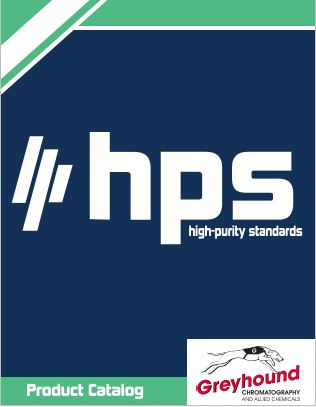Surfactants from Fracking may not be as harmful as previously thought
The strength of the U.S.'s energy policy depends in part on the diversity of its sources. Relying too much on any one source, particularly foreign fossil fuels, makes the nation vulnerable, which is why the federal Department of Energy is investing in developing other avenues for generation energy. These include solar, wind, geothermal power, nuclear power, hydropower and natural gas.
Domestic production of natural gas has been a particularly contentious environmental issue because of the use of the hydraulic fracturing process, which is also known as fracking. The chemical compounds and drilling procedures used in fracking have raised concerns about the potentially negative impact on air quality, seismic activity and water sources. Given the rising interest in natural gas, research teams across the U.S. are working to learn more about the different facets of the fracking process.
One team of scientists from the University of Colorado Boulder decided to study the surfactants that are used in fracking fluids. They concluded that these organic chemicals are no more harmful than what is already found in common household products, as published in the journal Analytical Chemistry.
Half of natural gas to come from shale by 2035
According to the U.S. Department of Energy, shale is a type of sedimentary rock that can act as a rich source of natural gas. The federal agency estimated that, by 2035, nearly half of the natural gas in the U.S. will come from shale. To maximize the amount of extractable natural gas from shale, some drilling companies have resorted to fracking, a process that forces various fluids down drilling wells. Environmental scientists have been concerned about fracking for several reasons, including the possibility that the chemicals mixed in with the drilling fluids will contaminate groundwater sources.
Federal and state regulations now require fracking companies to disclose the formulas of the drilling fluids they use, but businesses have been reluctant to do so because they use proprietary blends. Instead of releasing detailed formulas, they disclosed mixtures of general chemical categories, including surfactants.
To investigate further, the authors of the new study collected fluid samples through partnerships between their institution and Colorado State University. They used state-of-the-art mass spectrometry to analyze the surfactants in the fluid samples, and concluded that they were no more harmful than the chemical compounds found in products such as laxatives, toothpaste and ice cream.
"This is the first published paper that identifies some of the organic fracking chemicals going down the well that companies use," lead study author Michael Thurman, a co-founder of the Laboratory for Environmental Mass Spectrometry in CU-Boulder's College of Engineering and Applied Science, said in a statement. "We found chemicals in the samples we were running that most of us are putting down our drains at home."
Another reason why this study might be significant is that it demonstrated a way that researchers can "fingerprint" the unique proprietary blends of drilling fluids that fracking companies use. Such information will be useful in case of actual environmental contamination.
Caution is still necessary
Despite results indicating that the surfactants in the fracking fluid samples used for this study are not dangerous, the researchers were careful to point out that individual companies will modify their formulas depending on the geology of their drill sites. Additionally, the scientists cautioned that studies on fracking's impact on air pollution, seismic activity and water contamination from antimicrobial biocides must continue.
As of September 2012, the U.S. Environmental Protection Agency announced that it was supporting 18 ongoing research projects investigating the impact of fracking. These studies touch upon the effect of withdrawing large volumes of water from potential drinking water supplies, the consequences of potential fracking fluid spills, the potential for drinking water contamination and the repercussions of inadequate wastewater treatment.
CONTACT US
Tel: +44 (0) 151 649 4000
Email: marketing@greyhoundchrom.com
FOLLOW US
YOU MAY ALSO BE INTERESTED IN OUR NEWSLETTER
About the Author
Susan Massie, Sales & Marketing Director, Greyhound Chromatography and Allied Chemicals Email: sue@greyhoundchrom.com
Susan Massie is the Sales & Marketing Director for Greyhound Chromatography and Allied Chemicals, affectionately known as 'Greyhound' in our scientific community. Greyhound was founded by Susan's husband Paul Massie more than 40 years ago, Susan hasn't been in the business for all of that time but has been involved with Greyhound for over 17 years. Greyhound continues to grow, expanding into new markets and taking on the challenges of our ever changing environment. It's heartwarming to witness the world waking up to the fact that we are damaging our planet on a daily basis. Every action we take has a direct effect on our planet and the world we leave behind for future generations. Susan is passionate about climate change and is happy to work in an industry that can have a direct effect on reducing the impact of our actions on the environment. All of the team at Greyhound take our responsibilities very seriously, the products that we supply are used by the world's leading scientists and chemists as they endeavour to monitor and repair the environment. All is not lost, if we all take responsibility for our actions, from reducing our waste and reusing or recycling our material collateral we can make a difference. The internet is full of useful advice and guidance, Susan is proud to contribute to that wealth of knowledge whenever she can.
Greyhound prides itself on personal service which provides prompt, efficient, cost-effective, safe delivery of all products. Greyhound provides technical advice and distribution of Certified Reference Standards and Materials, Laboratory Consumables, Solvents and Reagents across all scientific disciplines. Greyhound Chromatography offers over 1 Million products from its UK warehouse. The team at Greyhound are proud to support the work of the world's leading scientists and chemists as they challenge the abuse of our planet and try to make a difference to the world we leave behind for our ancestors.
You can view Susan's Linked In Profile here https://www.linkedin.com/in/susan-massie-79ab4121/


















